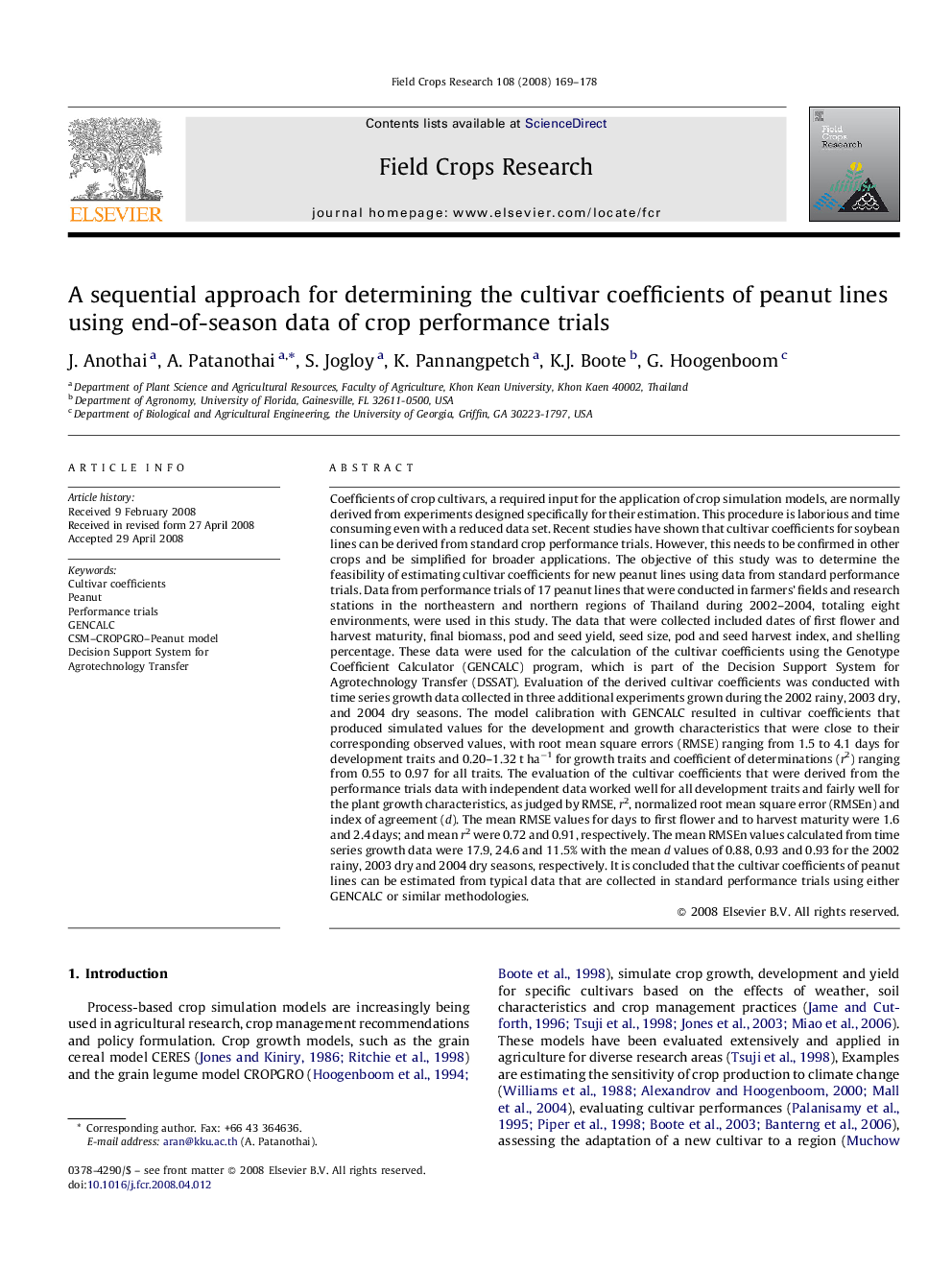| کد مقاله | کد نشریه | سال انتشار | مقاله انگلیسی | نسخه تمام متن |
|---|---|---|---|---|
| 4511342 | 1321904 | 2008 | 10 صفحه PDF | دانلود رایگان |

Coefficients of crop cultivars, a required input for the application of crop simulation models, are normally derived from experiments designed specifically for their estimation. This procedure is laborious and time consuming even with a reduced data set. Recent studies have shown that cultivar coefficients for soybean lines can be derived from standard crop performance trials. However, this needs to be confirmed in other crops and be simplified for broader applications. The objective of this study was to determine the feasibility of estimating cultivar coefficients for new peanut lines using data from standard performance trials. Data from performance trials of 17 peanut lines that were conducted in farmers’ fields and research stations in the northeastern and northern regions of Thailand during 2002–2004, totaling eight environments, were used in this study. The data that were collected included dates of first flower and harvest maturity, final biomass, pod and seed yield, seed size, pod and seed harvest index, and shelling percentage. These data were used for the calculation of the cultivar coefficients using the Genotype Coefficient Calculator (GENCALC) program, which is part of the Decision Support System for Agrotechnology Transfer (DSSAT). Evaluation of the derived cultivar coefficients was conducted with time series growth data collected in three additional experiments grown during the 2002 rainy, 2003 dry, and 2004 dry seasons. The model calibration with GENCALC resulted in cultivar coefficients that produced simulated values for the development and growth characteristics that were close to their corresponding observed values, with root mean square errors (RMSE) ranging from 1.5 to 4.1 days for development traits and 0.20–1.32 t ha−1 for growth traits and coefficient of determinations (r2) ranging from 0.55 to 0.97 for all traits. The evaluation of the cultivar coefficients that were derived from the performance trials data with independent data worked well for all development traits and fairly well for the plant growth characteristics, as judged by RMSE, r2, normalized root mean square error (RMSEn) and index of agreement (d). The mean RMSE values for days to first flower and to harvest maturity were 1.6 and 2.4 days; and mean r2 were 0.72 and 0.91, respectively. The mean RMSEn values calculated from time series growth data were 17.9, 24.6 and 11.5% with the mean d values of 0.88, 0.93 and 0.93 for the 2002 rainy, 2003 dry and 2004 dry seasons, respectively. It is concluded that the cultivar coefficients of peanut lines can be estimated from typical data that are collected in standard performance trials using either GENCALC or similar methodologies.
Journal: Field Crops Research - Volume 108, Issue 2, 23 August 2008, Pages 169–178